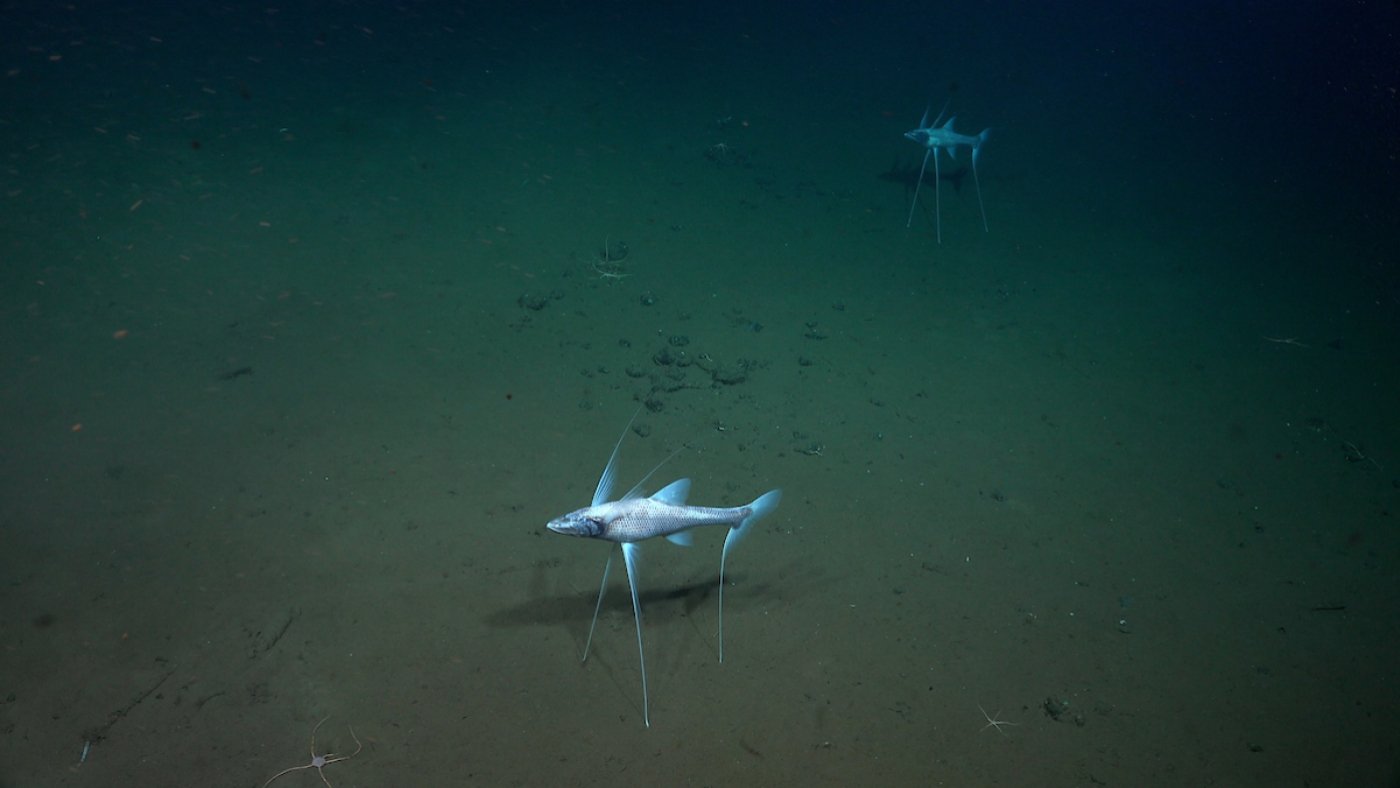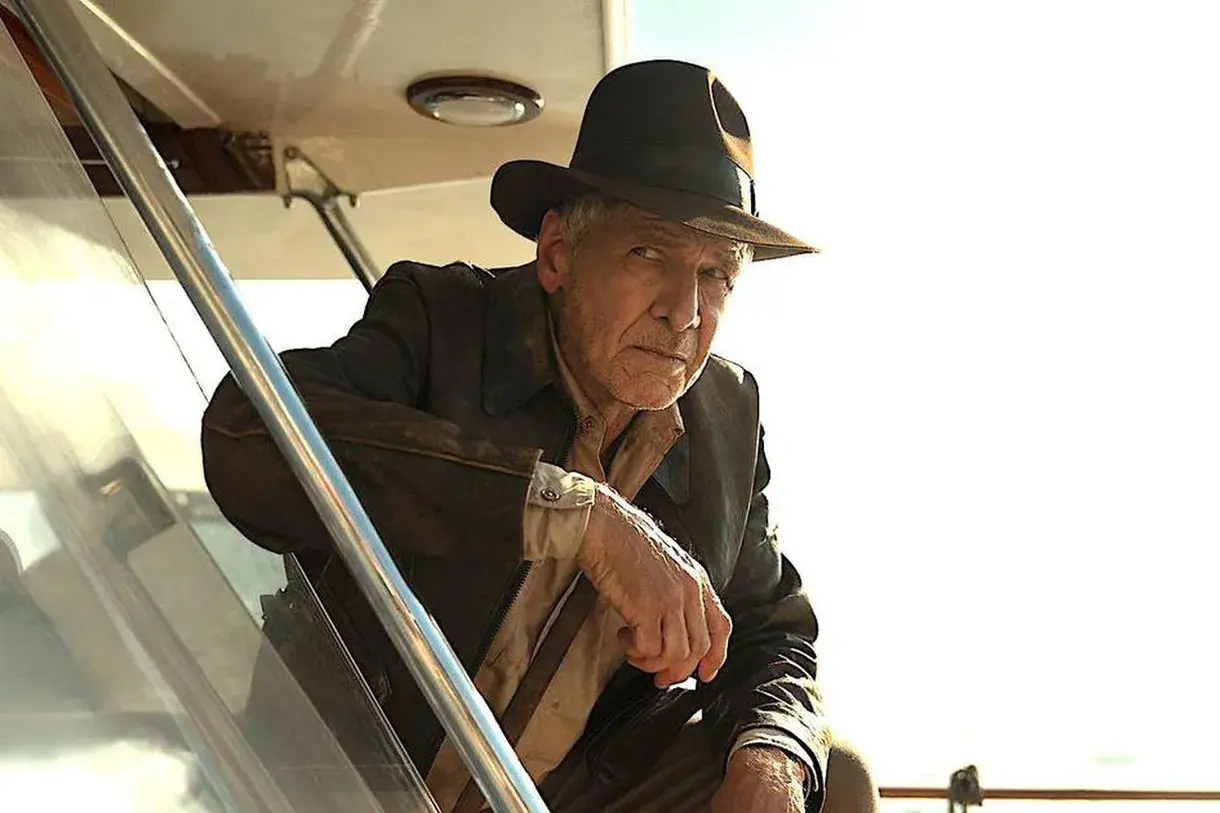Probably also doesn't like laying face down with the bed in cardiac chair position
badbrainstorm
I never made an issue of it when he was a child. We were very understanding and dealt with it as best we could. He didn't get a lot of haircuts. It is something I playfully joke with him about now that he's grown up. And I like and support his beautiful long hair. Thank you for reading into things and attacking me. I just love sharing on this community sometimes
I joke with him about it as an adult now. I'm definitely not the monster you're insinuating. My parents were monsters, so kindly fuck off. I'm sorry for sharing, asshole
He didn't have any context of what Samson even meant when he was a child either. It was kind of an inside joke between me and his mother, who were forced to attend cultish, crazy church when we were kids. It wasn't until he was old enough to laugh about it that I even told him the story. And it was just me joking about how his hair was his superpower
That was basically my son. Lost his fucking shit every time someone came anywhere near his hair. Like crazy stuff! Scissors or clippers.
It was a total pain in the ass, up until around jr high when he grew out of it. And he's a hairball now still. I tease him and call him Samson still sometimes to this day
I know he's not going anywhere, but we've all seen how fragile his ego is, so you know it's hurt his feelings.
I'm generally very sensitive to seeing people sad or upset. But there are a select few demons out there that it gives me pleasure. Small victories
Congressman nominates 27 Latino films for National Film Registry
Films by and about Latinos have often been left out of historical conversations including the Library of Congress’ National Film Registry. But Rep. Joaquin Castro (D-Texas), along with the Congressional Hispanic Caucus, has been trying to change that.
Castro has been working for years to help increase Latino representation in multiple industries across the U.S., including entertainment. Last week he sent a letter to Librarian of Congress Carla Hayden and the National Film Preservation Board listing 27 Latino films that should be considered for this year’s selection.
The goal of the registry is to select films that showcase a variety of range and diversity of American film heritage.
“This is my attempt and the Hispanic Caucus’ attempt to celebrate their contributions so that people will rightfully see us for something other than just the stereotypes,” Castro said. “As an industry that is purported to be incredibly culturally progressive in all kinds of causes, [the entertainment industry] has in fact been regressive and detrimental to the development of new voices, and the Latino community has paid the price of that exclusion.”
Castro said that the lack of representation on the registry is harmful not only to the Latino community, but also to other marginalized groups. He said he carefully selected films that break common stereotypes placed on the Latino community.
“Given the film industry’s continued exclusion of Latinos, we must make a special effort to ensure that Latino Americans’ contributions to American filmmaking are appropriately celebrated and included in the National Film Registry,” Castro said in his letter.
Every year the registry adds 25 films from the list of nominees and in recent years has increased emphasis on films by people of color and women. Even with this increase, out of the 850 titles on the registry, only 24 of them are Latino films.
Ana-Christina Ramón, the inaugural director of the Entertainment and Media Research Initiative at UCLA, has dedicated much of her work to researching access and equity in the entertainment industry. She said that including Latino films on the list of nominees and in the registry is crucial.
“Latinx people have been living here since before it was the United States and they are part of the American experience, and so for them not to be included, I think it would be a travesty,” Ramón said.
Ramón also said it is not only about the types of diverse stories that are being told, but also who is getting the jobs to play those roles.
“These films not only tell the story about Latin culture, but they influence American culture as well,” Ramón said.
Castro said the film industry seems to be more exclusive with the diversity of its lists than the music industry because it’s “layered with more gatekeepers.”
“That’s what this work is about. It’’s a celebration of the culture, but also a reminder to Hollywood that we’re here, that our contributions matter, and that they are worthy of recognition,” Castro said.
One of the films on the Library of Congress’ nomination list is “Sleep Dealer” by director Alex Rivera, which was released in 2008. The Sundance award-winning film is a sci-fi thriller about a young man, Memo Cruz, played by Luis Fernando Peña, in near-future Mexico who tries to survive a “misguided drone attack.”
Cruz tries to find safety near the U.S.-Mexico border but finds out migrant workers are unable to cross the border. He then tries to connect his body to a robot in the U.S. to help find a better future.
For over two decades, Rivera, who is a MacArthur “Genius Grant” winner and professor at Arizona State University, has dedicated his career to telling adventurous Latino stories. He said that Latino stories are not given adequate support to be successful. He said there is no shortage of Latino stories, but the problem is that there is not enough interest in Latino stories from decision makers.
“It’s so important that someone like Rep. Castro is using his platform and his power to highlight the simple reality of our community as part of this country,” Rivera said.
The official list of films added to the registry will be announced in December.
Here are the films nominated by Castro:
“... and the Earth Did Not Swallow Him” (1994)
“Blood In Blood Out” (1993)
“Raising Victor Vargas” (2002)
“Frida” (2002)
“I Like It Like That” (1994)
“Walkout” (2006)
“Mosquita y Mari” (2012)
“The Milagro Beanfield War” (1988)
“Under the Same Moon” (2007)
“American Me” (1992)
“Tortilla Soup” (2001)
“Mi Vida Loca” (1993)
“Instructions Not Included” (2013)
“Maria Full of Grace” (2004)
“Girlfight” (2000)
“La Mission” (2010)
“Sleep Dealer” (2008)
“Alambrista!” (1977)
“Our Latin Thing” (1972)
“Cheech & Chong’s Up in Smoke” (1978)
“A Better Life” (2011)
“Gun Hill Road” (2011)
“In the Time of the Butterflies” (2001)
“Roberto Clemente” (2008)
“The Longoria Affair” (2010)
latimes.com/genius-fellows-latinx-files
asu.edu/20221027-genius-grant-fellows-launch-latino-filmmaking-lab-asus-poitier-film-school

A new powerful antibiotic, isolated from bacteria that could not be studied before, seems capable to combat harmful bacteria and even multi-resistant 'superbugs'. Named Clovibactin, the antibiotic appears to kill bacteria in an unusual way, making it more difficult for bacteria to develop any resistance against it. Researchers from Utrecht University, Bonn University (Germany), the German Center for Infection Research (DZIF), Northeastern University of Boston (USA), and the company NovoBiotic Pharmaceuticals (Cambridge, USA) now share the discovery of Clovibactin and its killing mechanism in the scientific journal Cell.
Urgent need for new antibiotics
Antimicrobial resistance is a major problem for human health and researchers worldwide are looking for new solutions. "We urgently need new antibiotics to combat bacteria that become increasingly resistant to most clinically used antibiotics," says Dr. Markus Weingarth, a researcher from the Chemistry Department of Utrecht University.
However, the discovery of new antibiotics is a challenge: few new antibiotics have been introduced into the clinics over the last decades, and then they often resemble older, already known antibiotics.
"Clovibactin is different," says Weingarth. "Since Clovibactin was isolated from bacteria that could not be grown before, pathogenic bacteria have not seen such an antibiotic before and had no time to develop resistance."
Antibiotic from bacterial dark matter
Clovibactin was discovered by NovoBiotic Pharmaceuticals, a small US-based early-stage company, and microbiologist Prof. Kim Lewis from Northeastern University, Boston. Earlier, they developed a device that allows to grow 'bacterial dark matter', which are so-called unculturable bacteria. Intriguingly, 99% of all bacteria are 'unculturable' and could not be grown in laboratories previously, hence they could not be mined for novel antibiotics. Using the device, called iCHip, the US researchers discovered Clovibactin in a bacterium isolated from a sandy soil from North Carolina: E. terrae ssp. Carolina.
In the joint Cell publication, NovoBiotic Pharmaceuticals shows that Clovibactin successfully attacks a broad spectrum of bacterial pathogens. It was also successfully used to treated mice infected with the superbug Staphylococcus aureus.
A broad target spectrum
Clovibactin appears to have an unusual killing mechanism. It targets not just one, but three different precursor molecules that are all essential for the construction of the cell wall, an envelope-like structure that surrounds bacteria. This was discovered by the group of Prof. Tanja Schneider from the University of Bonn in Germany, one of the Cell paper's co-authors.
Schneider: "The multi-target attack mechanism of Clovibactin blocks bacterial cell wall synthesis simultaneously at different positions. This improves the drug's activity and substantially increases its robustness to resistance development."
A cage-like structure
How exactly Clovibactin blocks the synthesis of the bacterial cell wall was unraveled by the team of Dr. Markus Weingarth from Utrecht University. They used a special technique called solid-state nuclear magnetic resonance (NMR) that allows to study Clovibactin's mechanism under similar conditions as in bacteria.
"Clovibactin wraps around the pyrophosphate like a tightly sitting glove. Like a cage that encloses its target" says Weingarth. This is was gives Clovibactin its name, which is derived from Greek word "Klouvi," which means cage. The remarkable aspect of Clovibactin's mechanism is that it only binds to the immutable pyrophosphate that is common to cell wall precursors, but it ignores that variable sugar-peptide part of the targets. "As Clovibactin only binds to the immutable, conserved part of its targets, bacteria will have a much harder time developing any resistance against it. In fact, we did not observe any resistance to Clovibactin in our studies."
Fibrils capture the targets
Clovibactin can do even more. Upon binding the target molecules, it self-assembles into large fibrils on the surface of bacterial membranes. These fibrils are stable for a long time and thereby ensure that the target molecules remain sequestered for as long as necessary to kill bacteria.
"Since these fibrils only form on bacterial membranes and not on human membranes, they are presumably also the reason why Clovibactin selectively damages bacterial cells but is not toxic to human cells," says Weingarth. "Clovibactin hence has potential for the design of improved therapeutics that kill bacterial pathogens without resistance development.."
Sciencedaily.com
A paper recently published in Nature Energy based on pioneering research done at Illinois Institute of Technology reveals a promising breakthrough in green energy: an electrolyzer device capable of converting carbon dioxide into propane in a manner that is both scalable and economically viable.
As the United States races toward its target of net-zero greenhouse gas emissions by 2050, innovative methods to reduce the significant carbon dioxide emissions from electric power and industrial sectors are critical. Mohammad Asadi, assistant professor of chemical engineering at Illinois Tech, spearheaded this groundbreaking research.
"Making renewable chemical manufacturing is really important," says Asadi. "It's the best way to close the carbon cycle without losing the chemicals we currently use daily."
What sets Asadi's electrolyzer apart is its unique catalytic system. It uses inexpensive, readily available materials to produce tri-carbon molecules -- fundamental building blocks for fuels like propane, which is used for purposes ranging from home heating to aviation.
To ensure a deep understanding of the catalyst's operations, the team employed a combination of experimental and computational methods. This rigorous approach illuminated the crucial elements influencing the catalyst's reaction activity, selectivity, and stability.
A distinctive feature of this technology, lending to its commercial viability, is the implementation of a flow electrolyzer. This design permits continuous propane production, sidestepping the pitfalls of the more conventional batch processing methods.
"Designing and engineering this laboratory-scale flow electrolyzer prototype has demonstrated Illinois Tech's commitment to creating innovative technologies. Optimizing and scaling up this prototype will be an important step toward producing a sustainable, economically viable, and energy-efficient carbon capture and utilization process," says Advanced Research Projects Agency-Energy Program Director Jack Lewnard.
This innovation is not Asadi's first venture into sustainable energy. He previously adapted a version of this catalyst to produce ethanol by harnessing carbon dioxide from industrial waste gas. Recognizing the potential of the green propane technology, Asadi has collaborated with global propane distributor SHV Energy to further scale and disseminate the system.
"This is an exciting development which opens up a new e-fuel pathway to on-purpose propane production for the benefit of global users of this essential fuel," says Keith Simons, head of research and development for sustainable fuels at SHV Energy.
Illinois Tech Duchossois Leadership Professor and Professor of Physics Carlo Segre, University of Pennsylvania Professor of Materials Science and Engineering Andrew Rappe, and University of Illinois Chicago Professor Reza Shahbazian-Yassar contributed to this work. Mohammadreza Esmaeilirad (Ph.D. CHE '22) was a lead author on the paper.
If you’re not Google (or, to a much lesser extent, Apple), map apps are damned hard to make. Last year, several major heavy hitters in tech, including the likes of Meta, Microsoft, TomTom, and Amazon, decided to lay down their arms and meet under a flag of parlay held aloft by the Linux Foundation to make mapping just a little easier, cheaper, and less dominated by two companies. Alone, none could establish a big enough data pool to rival the likes of Google Maps, but with their individual hoards of business location data, satellite mapping tech, and more support from smaller tech firms, they could perhaps gather enough data together to help create a whole new series of up-to-date map apps.
On Wednesday, this pooled initiative, called the Overture Maps Foundation, shared its first alpha release for its mapping data. It contains millions of examples for buildings, roads, and geographic boundaries. It’s only the first large release for the planned massive dataset, but the hope is there will be much more to come as companies sign on.
Marc Prioleau, the executive director of the Overture Maps Foundation, was named as head of the project back in May. He’s been around mapping projects for many years, having worked in the start of the GPS market back in 1995, and later moved on to the likes of Meta and Uber for their location-based services. He said if there’s one thing that strikes at the difficulty of building a high-quality app with exacting road and place information, it’s the ephemeral nature of public infrastructure.
“The hardest thing in mapping is knowing what’s changed in the world,” Prioleau told Gizmodo in a video chat. Essentially, map apps are some of the hardest to design simply because of the massive amount of data required to build the systems. Not only do they need to be accurate, but they need to be constantly updated when businesses close and new ones open.
The first Overture release contains about 59 million points of interest that the group claims has not yet been released as open data before. A POI could be anything—a public landmark, a specific building, or a local business. Otherwise, the data contains about 750 million building footprints alongside road data that’s mostly collated from the crowdsourced OpenStreetMap project.
So how much of the world does this alpha release truly cover? Prioleau said the POI data makes up around 60 to 70% of a worldwide dataset. In his mind, a good number to shoot for is somewhere between 80 and 100 million places. It’s something of a Goldilocks problem. With around 200 million POIs, Prioleau said you’d likely be hoarding a lot of “junk,” but too little means you’re obviously missing out on locations, especially from less represented countries.
As far as the building data, he said that “feels pretty complete” as far as laying out worldwide structures, considering that the U.S. itself contains something around 100 million buildings. A good chunk of that data came from Meta through businesses listing their addresses on Facebook or Instagram. Microsoft also handed over some of its data through its work on Bing Maps, but the two sets combined included duplicates, which cut down on total numbers. The Overture director said the foundation has plans to add more datasets in the future from other sources centered on different continents.
The road data is a different beast entirely. The vast majority of it is based on the OpenStreetMap project, an open source, wiki-style resource compiled by internet users going on nearly 18 years. Prioleau said Overture has modified the project’s info to make it easier to attach new datapoints. The project has also worked to standardize and fact check the data contained on the project’s site. There’s also several benefits to using this Wikipedia-style map compared to how Google might spend billions maintaining its map data every year (or otherwise buying up the competition like it did with Waze). Users on the ground can archive and modify the map to note damage during a natural disaster.
“One of the things [OpenStreetMap] does incredibly well is build richness into the map, because what you map is no longer determined by what your commercial interest is, it’s what the community wants to map.”
Prioleau described himself as “the only full time employee” of the Linux Foundation-based group. Otherwise, the Foundation has depended on around 130 engineers from Meta, Microsoft, and more of the steering companies. As far as maintaining the data, the Overture head said that there’s no contractual agreement for companies to use the open source resources, but they’re still heavily encouraging all those who build upon their foundation to somehow give back to the data source with any new information they collect.
“The incentive is: if you want to fork [AKA build off] Overture, start building your own dataset and not give stuff back, then you’re on your own to maintain that dataset going forward.” Prioleau said. “So the incentive to giving back is that your data remains part of this consortium.”
What’s next is to create a “global entity reference system” for attaching data points to a map, which will then facilitate even more layers of information for new apps. Today’s map users aren’t just looking for ways to get from place to place, but from door to door. Delivery drivers need to know where they can pick up and drop off items. People with disabilities want to know where they can find ramp or elevator access.
“Maps are really digitization of things that are observable,” the Overture lead said. “We’re not mapping secret stuff. We’re mapping roads and addresses and places—things that are observable. And as the ways of capturing observable stuff gets better, the ability to build maps gets better.”
Links: gizmodo.com/your-phones-navigation-app-is-probably-smarter-than-you
https://gizmodo.com/iphone-find-my-apple-maps-mistake-houston-house
gizmodo.com/linux-google-maps-meta-aws-microsoft-tomtom
prnewswire.com/news-releases/overture-maps-foundation-names-marc-prioleau-as-executive-director
gizmodo.com/why-google-buying-waze-will-keep-you-out-of-gridlock

Around the time J. Robert Oppenheimer learned that Hiroshima had been struck (alongside everyone else in the world) he began to have profound regrets about his role in the creation of that bomb. At one point when meeting President Truman Oppenheimer wept and expressed that regret. Truman called him a crybaby and said he never wanted to see him again. And Christopher Nolan is hoping that when Silicon Valley audiences of his film Oppenheimer (out June 21) see his interpretation of all those events they’ll see something of themselves there too.
After a screening of Oppenheimer at the Whitby Hotel yesterday Christopher Nolan joined a panel of scientists and Kai Bird, one of the authors of the book Oppenheimer is based on to talk about the film, American Prometheus. The audience was filled mostly with scientists, who chuckled at jokes about the egos of physicists in the film, but there were a few reporters, including myself, there too.
We listened to all too brief debates on the success of nuclear deterrence and Dr. Thom Mason, the current director of Los Alamos, talked about how many current lab employees had cameos in the film because so much of it was shot nearby. But towards the end of the conversation the moderator, Chuck Todd of Meet the Press, asked Nolan what he hoped Silicon Valley might learn from the film. “I think what I would want them to take away is the concept of accountability,” he told Todd.
“Applied to AI? That’s a terrifying possibility. Terrifying.”
He then clarified, “When you innovate through technology, you have to make sure there is accountability.” He was referring to a wide variety of technological innovations that have been embraced by Silicon Valley, while those same companies have refused to acknowledge the harm they’ve repeatedly engendered. “The rise of companies over the last 15 years bandying about words like ‘algorithm,’ not knowing what they mean in any kind of meaningful, mathematical sense. They just don’t want to take responsibility for what that algorithm does.”
He continued, “And applied to AI? That’s a terrifying possibility. Terrifying. Not least because as AI systems go into the defense infrastructure, ultimately they’ll be charged with nuclear weapons and if we allow people to say that that’s a separate entity from the person’s whose wielding, programming, putting AI into use, then we’re doomed. It has to be about accountability. We have to hold people accountable for what they do with the tools that they have.”
While Nolan didn’t refer to any specific company it isn’t hard to know what he’s talking about. Companies like Google, Meta and even Netflix are heavily dependent on algorithms to acquire and maintain audiences and often there are unforeseen and frequently heinous outcomes to that reliance. Probably the most notable and truly awful being Meta’s contribution to genocide in Myanmar.
“At least is serves as a cautionary tale.”
While an apology tour is virtually guaranteed now days after a company’s algorithm does something terrible the algorithms remain. Threads even just launched with an exclusively algorithmic feed. Occasionally companies might give you a tool, as Facebook did, to turn it off, but these black box algorithms remain, with very little discussion of all the potential bad outcomes and plenty of discussion of the good ones.
“When I talk to the leading researchers in the field of AI they literally refer to this right now as their Oppenheimer moment,” Nolan said. “They’re looking to his story to say what are the responsibilities for scientists developing new technologies that may have unintended consequences.”
“Do you think Silicon Valley is thinking that right now?” Todd asked him.
“They say that they do,” Nolan replied. “And that’s,” he chuckled, “that’s helpful. That at least it’s in the conversation. And I hope that thought process will continue. I’m not saying Oppenheimer’s story offers any easy answers to these questions. But at least it serves a cautionary tale.”

Astronomers imaging the cosmos with the Webb Space Telescope have found the most distant active supermassive black hole yet. The black hole was “seen” as it was around 570 million years after the Big Bang.
The universe is about 13.77 billion years old, meaning the newly discovered black hole popped up when the universe was just over 4% its current age. The black hole lurks within the galaxy CEERS 1019, and at nine million solar masses, is the least massive of any supermassive black hole yet seen in the early universe.
For comparison, the black hole at the center of the Milky Way—Sagittarius A*—is less than five million solar masses. Supermassive black holes are some of the densest objects in the universe and can be billions of times the mass of our Sun. Like all black holes, they have such intense gravitational fields that not even light can escape their event horizons, leaving astronomers to image the “shadow” in which the black hole resides.
CEERS 1019’s black hole was spotted by a research team conducting the Cosmic Evolution Early Release Science Survey, or CEERS. The survey takes deep field images of the cosmos, which cover sweeping swaths of the sky and peer deeply into them, allowing scientists to see some of the universe’s most ancient light.
The newest CEERS mosaic image is 510 megabytes—beyond what this website can handle—so if you’d like to peruse the cosmos in all its digitized glory you can download the full-size image here. The combined image contains about 100,000 galaxies.
Besides CEERS 1019, the survey team spotted eleven galaxies that date to when the universe was between 470 million years old and 675 million years old, and two other black holes dating to around one billion years after the Big Bang, according to a Space Telescope Science Institute release.
Four papers on CEERS Survey data are set to publish in The Astrophysical Journal Letters. The papers announce the discovery of the ancient black hole, detail the spectroscopy of active galactic nuclei at high redshifts, the confirmation of distant galaxies, and an initial characterization of their properties.
“Looking at this distant object [CEERS 1019] with this telescope is a lot like looking at data from black holes that exist in galaxies near our own,” said Rebecca Larson, an astronomer at the University of Texas at Austin and lead author of one of the CEERS papers, in the STScI release. According to the release, Webb is detecting more galaxies at these extreme distances than researchers expected it would.
Black hole evolution is still something of a black box in astrophysics, so being able to see such ancient black holes is a boon to researchers trying to understand how the universe’s most massive objects grow and affect masses around them.
The CEERS Survey is providing data that will help scientists decipher black holes, just as gravitational wave observatory data is clueing astrophysicists into the gravitational wave background generated by supermassive black holes.
But supermassive black holes have to grow out of something, and a dearth of intermediate-mass black holes in the cosmos has only raised more questions about how stellar-mass black holes give rise to such cosmic behemoths.
“Researchers have long known that there must be lower mass black holes in the early universe. Webb is the first observatory that can capture them so clearly,” said Dale Kocevski, an astronomer at Colby College and lead author of another CEERS paper, in the same release. “Now we think that lower mass black holes might be all over the place, waiting to be discovered.”
Next week will mark a year of Webb Space Telescope science observations; in other words, the trove of insights are just the beginning for the powerful observatory.

When photosynthetic cells absorb light from the sun, packets of energy called photons leap between a series of light-harvesting proteins until they reach the photosynthetic reaction center. There, cells convert the energy into electrons, which eventually power the production of sugar molecules.
This transfer of energy through the light-harvesting complex occurs with extremely high efficiency: Nearly every photon of light absorbed generates an electron, a phenomenon known as near-unity quantum efficiency.
A new study from MIT chemists offers a potential explanation for how proteins of the light-harvesting complex, also called the antenna, achieve that high efficiency. For the first time, the researchers were able to measure the energy transfer between light-harvesting proteins, allowing them to discover that the disorganized arrangement of these proteins boosts the efficiency of the energy transduction.
"In order for that antenna to work, you need long-distance energy transduction. Our key finding is that the disordered organization of the light-harvesting proteins enhances the efficiency of that long-distance energy transduction," says Gabriela Schlau-Cohen, an associate professor of chemistry at MIT and the senior author of the new study.
MIT postdocs Dihao Wang and Dvir Harris and former MIT graduate student Olivia Fiebig PhD '22 are the lead authors of the paper, which will appear in the Proceedings of the National Academy of Sciences. Jianshu Cao, an MIT professor of chemistry, is also an author of the paper.
Energy capture
For this study, the MIT team focused on purple bacteria, which are often found in oxygen-poor aquatic environments and are commonly used as a model for studies of photosynthetic light-harvesting.
Within these cells, captured photons travel through light-harvesting complexes consisting of proteins and light-absorbing pigments such as chlorophyll. Using ultrafast spectroscopy, a technique that uses extremely short laser pulses to study events that happen on timescales of femtoseconds to nanoseconds, scientists have been able to study how energy moves within a single one of these proteins. However, studying how energy travels between these proteins has proven much more challenging because it requires positioning multiple proteins in a controlled way.
To create an experimental setup where they could measure how energy travels between two proteins, the MIT team designed synthetic nanoscale membranes with a composition similar to those of naturally occurring cell membranes. By controlling the size of these membranes, known as nanodiscs, they were able to control the distance between two proteins embedded within the discs.
For this study, the researchers embedded two versions of the primary light-harvesting protein found in purple bacteria, known as LH2 and LH3, into their nanodiscs. LH2 is the protein that is present during normal light conditions, and LH3 is a variant that is usually expressed only during low light conditions.
Using the cryo-electron microscope at the MIT.nano facility, the researchers could image their membrane-embedded proteins and show that they were positioned at distances similar to those seen in the native membrane. They were also able to measure the distances between the light-harvesting proteins, which were on the scale of 2.5 to 3 nanometers.
Disordered is better
Because LH2 and LH3 absorb slightly different wavelengths of light, it is possible to use ultrafast spectroscopy to observe the energy transfer between them. For proteins spaced closely together, the researchers found that it takes about 6 picoseconds for a photon of energy to travel between them. For proteins farther apart, the transfer takes up to 15 picoseconds.
Faster travel translates to more efficient energy transfer, because the longer the journey takes, the more energy is lost during the transfer.
"When a photon gets absorbed, you only have so long before that energy gets lost through unwanted processes such as nonradiative decay, so the faster it can get converted, the more efficient it will be," Schlau-Cohen says.
The researchers also found that proteins arranged in a lattice structure showed less efficient energy transfer than proteins that were arranged in randomly organized structures, as they usually are in living cells.
"Ordered organization is actually less efficient than the disordered organization of biology, which we think is really interesting because biology tends to be disordered. This finding tells us that that may not just be an inevitable downside of biology, but organisms may have evolved to take advantage of it," Schlau-Cohen says.
Now that they have established the ability to measure inter-protein energy transfer, the researchers plan to explore energy transfer between other proteins, such as the transfer between proteins of the antenna to proteins of the reaction center. They also plan to study energy transfer between antenna proteins found in organisms other than purple bacteria, such as green plants.
The research was funded primarily by the U.S. Department of Energy.

Isaac Schultz
The Webb Space Telescope has taken an image of the ringed planet Saturn, completing its photo album of our solar system’s gas giants.
Webb Telescope Images the Pillars of Creation
Off
English
Webb is a $10 billion space observatory launched in December 2021. The telescope consists of two imagers: the Near-Infrared Camera (NIRCam) and the Mid-Infrared Instrument (MIRI). Webb has been producing scientific images since July 2022.
Though one of Webb’s primary focuses is the earliest light it can see, which dates back to several hundred million years after the Big Bang, it also is providing insights on our stellar neighborhood. The new image of Saturn complete’s the telescope’s tour of our solar system’s gas giants, or the nearby worlds mostly composed of helium and hydrogen.
Jupiter was the first planet to be imaged by Webb, in August 2022. The Webb team produced an image of Neptune—including its rings and moons—in September and followed that image up with a shot of the rings rimming Uranus, the seventh planet from the Sun.
The image of Saturn was taken on June 25, using Webb’s NIRCam. Saturn appears quite dark because the planet’s methane absorbs much of the sunlight that hits the planet’s atmosphere. The planet’s rings, mostly composed of ice and rock, remain luminous.
The Cassini division, a gap between the planet’s A ring and B ring caused by the gravitational pull of Saturn’s moon Mimas, is also visible in the image.
And speaking of moons: on the left side of the image are the Saturnian satellites Dione, Tethys, and Enceladus. Webb imaged Enceladus in May, and found a 6,000-mile-long (9,660 km) water plume spewing from the icy moon. Enceladus is of significant scientific interest because it has a subsurface ocean, and water is a prerequisite for life as we know it.
Last month, data from the Cassini spacecraft—whose mission ended in 2017, when it plummeted into Saturn’s atmosphere—revealed the presence of phosphorus in Enceladus’ water, another boost to the prospect of life hiding away beneath the moon’s icy crust.
But until a dedicated mission to Enceladus gets off the ground, we may have to settle for the insights of Webb’s unflinching gaze.
More: Then and Now: Our Earliest Close-Ups of the Planets Compared to Today’s Best Shots
exoplanets.nasa.gov:https://gizmodo.com/webb gizmodo.neptune-rings gizmodo.uranus gizmodo.com/webb-telescope-spots-large-plume gizmodo.com/saturn-moon-enceladus-phosphorus caps.gsfc.nasa.gov/simson/kingswood/rings/

It's easy to feel like we won't win the fight against climate change, especially when faced with the realities of a warming planet and the ongoing issue of climate science misinformation.
Climate change is happening, though. Look no further than the Earth's increasingly devastating natural disasters, looming water crisis, and disappearing ice sheets.
To combat warming temperatures we have to dramatically lower carbon emissions, according to the United Nation's Intergovernmental Panel on Climate Change (IPCC), and address the rising levels of carbon dioxide. That won't be easy(opens in a new tab).
At the 2022 Conference of the Parties to the United Nations Framework Convention on Climate Change (COP27), world leaders chose not to move away decisively from a widespread reliance on fossil fuels(opens in a new tab) and posed continued concerns about failures to lower emissions. The 2022 Emissions Gap Report(opens in a new tab), released by the UN Environment Programme just before COP27, still found that there was "no credible pathway to a 1.5 C future" without "rapid societal transformation."
"Limiting warming to 1.5 C is possible within the laws of chemistry and physics, but doing so would require unprecedented changes," Jim Skea, a leading UN Intergovernmental Panel on Climate Change scientist, said in 2018.
But there is cause for hope, Charlie Jiang, a former climate campaigner at Greenpeace, told Mashable in 2019. Greenpeace climate campaigners work with climate change advocacy organizations such as Zero Hour(opens in a new tab) to confront fossil fuel companies and politicians standing in the way of transformative climate change action. One of Greenpeace's strategies has been to pressure political candidates to publish comprehensive (opens in a new tab)plans(opens in a new tab) that invest in clean energy and phase out fossil fuels, without hurting workers.
President Joe Biden has since made several climate action pledges(opens in a new tab), including co-leading the Forest and Climate Leaders' Partnership (FCLP) deforestation initiative, scaling up production and use of zero emission vehicles (ZEVs), and a $1-billion commitment to the Green Climate Fund(opens in a new tab). The administration also set a new goal of achieving a carbon pollution-free power sector by 2035 and net-zero emissions economy by no later than 2050.
"Amidst all the scary news that we're getting, it's a hopeful moment for bold transformation... We deserve a better future than the one that our complacent politicians and the fossil-fuel billionaires are handing to us," Jiang said.
Here's how you can join the tide against the climate crisis.
- Get involved in climate change strikes
Uniting together across demographics can be one of the most impactful strategies in the fight to stop the effects of climate change, Jiang said.
And climate protests have long been used to call attention to growing climate issues, bad actors, and environmental threats.
Global Climate Strike(opens in a new tab) is an annual, international strike to call attention to the need for international leaders to take the climate crisis seriously. It's part of the weekly protest initiative Fridays for the Future(opens in a new tab), founded by youth climate activist Greta Thunberg, and its annual Global Day Of Climate Action.
You can find a protest near you by visiting the websites for Fridays for the Future, the U.S. Youth Climate Strike Coalition(opens in a new tab), or the Global Climate Strike(opens in a new tab).
If you want to take further action, the Global Climate Strike website offers a wealth of resources(opens in a new tab) including tips to promote the strike on social media and graphics for posters, flyers, and buttons. It even has toolkits that specific groups like employees or faith-based groups can use to encourage others to join.
If you want to take part but can't find a strike or protest where you live, the U.S. Youth Climate Strike Coalition has a comprehensive document(opens in a new tab) that anyone looking to organize their own climate change protest on Fridays can use. The Global Climate Strike offers similar resources(opens in a new tab). You can also use these teachings to plan future strikes throughout the year. For additional inspiration, the Carnegie Endowment for International Peace's Climate Protest Tracker(opens in a new tab) also tracks international climate actions and their participants, objectives, and outcomes.
2. Advocate for inclusive climate solutions
Climate activists can expand their approach by considering how environmental preservation — and climate philanthropy — operate alongside the Indigenous communities that have fought to retain stewardship of the land over centuries of colonization.
Some are now turning towards Indigenous-led solutions to environmental degradation, climate change, and the impact of extractive industries like logging and fossil fuels, and government leaders are creating more pathways(opens in a new tab) for these communities to be on the frontlines of the climate movement.
In the nonprofit space, organizations like the Decolonizing Wealth Project(opens in a new tab), a grassroots community of funders offering untethered money to Indigenous-led organizations, and Indigenous Climate Action(opens in a new tab) are fostering a more inclusive environmental movement.
To learn more about these Indigenous climate initiatives and get involved with their work, visit the Decolonizing Wealth Project's Indigenous Earth Fund(opens in a new tab). 3. Research politicians' voting history
Knowing elected officials' track records helps you make an informed vote during elections. And avoid voting a climate denier into office.
The nonpartisan research organization Vote Smart(opens in a new tab) provides information on the voting records, policy positions, and funding behind candidates and elected officials.
During state and local races, check out Vote411(opens in a new tab)'s voter and ballot guides(opens in a new tab), which contain information about ballot measures, as well as current candidates' positions on a variety of issues. You can also see candidates answer questions about topics important to them and your community, so you can note if they prioritize climate change in their answers.
The League of Conservation Voters(opens in a new tab), an organization that advocates for environmental laws and works to elect pro-environmental candidates(opens in a new tab), scores(opens in a new tab) Congress members on their environmental records and assigns both the House and the Senate an average rating.
Apps like ReleVote(opens in a new tab) can also help you keep track of your representatives' congressional decisions, as well as monitor relevant climate and environmental legislation.
4. Speak to elected officials
Beyond voting, you also can talk to elected officials about the specific climate change issues you care about and how you'd like to see them addressed, as a constituent.
For example, carbon-pricing bills(opens in a new tab) place a fee on carbon and, in some cases, other fossil fuels, to encourage sustainable energy alternatives and reduce greenhouse gas emissions. Cities or states can also mandate that a certain percentage of their energy comes from carbon-free sources, like New York's ambitious OneNYC climate plan(opens in a new tab).
Look to see if your state or local government is considering bills like these and contact the appropriate politician to let them know why you support it. Nonprofit research institute Resources for the Future(opens in a new tab) also hosts a carbon pricing bill tracker(opens in a new tab) that monitors current legislation.
Calling representatives can be impactful as well, and it's easy to find politicians' contact information with a quick Google search.
"If they [a state lawmaker] receive five calls in a day about a single issue, that is an avalanche of calls," says Jamie DeMarco, former member of the environmental grassroots organization Citizens' Climate Lobby(opens in a new tab) (CCL) and Maryland Director at Chesapeake Climate Action Network. " "We need everyone taking action to demand our leaders commit to stand up to the fossil fuel industry." "
The key is to band together with others to more easily deluge a politician's office with calls, he said.
If you prefer speaking with congressional members in person, CCL trains people to lobby their senators and representatives on climate change, both in D.C. and in volunteers' home states. Volunteers speak with congressional members face-to-face about bills they want the representatives to support. This might seem radical but can be very effective, said Steve Valk, CCL's communications director.
If you're interested in joining this effort, you can find a CCL chapter in your area(opens in a new tab).
Check if your state has an office, commission, or committee that focuses on climate change and if the public can attend. You can also go to congressional members' town hall meetings. Usually there's time for the audience to express their concerns and ask questions, Valk said.
Ultimately, the world needs us to get involved, activists emphasize.
"We need everyone taking action to demand our leaders commit to stand up to the fossil fuel industry," Jiang said.
Originally published in September 2019, this story was updated with new information in July 2023. Additional reporting by Chase DiBenedetto.
Links: [mashable](https://mashable.com/article/wildfire-smoke-nyc-canada-video mashable2 Mashable3) Report zerohour.org/ Vox Whitehouse.gov Green climate fund strikewithus.org https://globalclimatestrike.net/ Google doc climate-protest-tracker native-solutions-climate-change decolonizingwealth indigenousclimateaction https://decolonizingwealth.com/liberated-capital/ief/ votesmart.org vote411.org vote411.org/ballot https://www.lcv.org/ relevote.com/ citizensclimatelobby.org/carbon-pricing-congress Resources for the Future carbon-pricing-bill-tracker

An octopus captured on camera during recent deep sea expedition.
An octopus captured on camera during a recent deep sea expedition. Credit: Schmidt Ocean Institute
Scientists just explored the realm of octopi. They returned with discoveries.
On a deep sea expedition off of Costa Rica, researchers used a robotic submersible to capture footage of previously unexplored seamounts, finding them teeming with almost otherworldly life. The mission, led by the Schmidt Ocean Institute, an organization that researches the seas, visited a little-seen octopus nursery — where groups of female octopi gather and guard their valuable eggs.
The explorers also found an entirely new octopus nursery, just the third known to science.
"The discovery of a new active octopus nursery over 2,800 meters [over 9,000 feet] beneath the sea surface in Costa Rican waters proves there is still so much to learn about our ocean," Schmidt Ocean Institute executive director Jyotika Virmani, an oceanographer, said in a statement.

Peering into the uncharted depths often returns discoveries or unparalleled footage of an underwater world that's still quite alien to us. "We know so little about the deep ocean that pretty much anyone can find something new if they were doing something unique down there," Alan Leonardi, the former director of the National Oceanic and Atmospheric Administration's Office of Ocean Exploration and Research, previously told Mashable.
Interestingly, the newly found nursery, shown in the June 2023 images below, is near a low-temperature [hydrothermal vent, a place where hot or warm mineral-rich seawater flows from Earth's crust. This suggests some octopus species intentionally brood their eggs around these vents. (Another octopus nursery called the Dorado Outcrop nursery also dwells near a vent, and researchers even observed hatching there.)
The recently found octopi could be a new species of Muusoctopus, an octopus species with no ink sac.
In a newly discovered octopus nursery, members of an octopus species guard their eggs.
In a newly discovered octopus nursery, members of an octopus species guard their eggs. Credit: Schmidt Ocean Institute
More newfound octopi in a deep sea nursery.
More newfound octopi in a deep sea nursery. Credit: Schmidt Ocean Institute

Overall, the expedition spotted hundreds of other deep ocean critters, which are adapted to the cold depths and darkness. Below is a three-minute video of these animals, followed by an image of curious tripod fish.
Two tripod fish spotted nearly 10,000 feet under the ocean surface.
Two tripod fish spotted nearly 10,000 feet under the ocean surface. Credit: Schmidt Ocean Institute
Want more science and tech news delivered straight to your inbox? Sign up for Mashable's Light Speed newsletter today.
A primary goal of such expeditions is to document what's down there, especially because most of the deep sea is unprotected. For example, these recently explored seamounts are unprotected from human activity, according to the Schmidt Ocean Institute. As of now, the laws governing deep sea mining — a developing, looming industry — are woefully outdated. They were established in 1975, but the first deep sea hydrothermal vents(opens in a new tab), and the life they support, weren't discovered until 1977.
The deep seas clearly hold bounties of biodiversity and life, along with great medicinal potential for our species. "Systematic searches for new drugs have shown that marine invertebrates produce more antibiotic, anti-cancer, and anti-inflammatory substances than any group of terrestrial organisms," notes the National Oceanic and Atmospheric Administration(opens in a new tab).
 These deep sea expeditions, then, do more than document wonder. They could play a vital role in protecting some of Earth's rare and invaluable ecosystems.
These deep sea expeditions, then, do more than document wonder. They could play a vital role in protecting some of Earth's rare and invaluable ecosystems.
Mark is an award-winning journalist and the science editor at Mashable. After communicating science as a ranger with the National Park Service, he began a reporting career after seeing the extraordinary value in educating the public about the happenings in earth sciences, space, biodiversity, health, and beyond. source

The new Indiana Jones movie hits different in the IP age.
In 1981’s Indiana Jones and the Raiders of the Lost Ark, the mercenary archaeologist René Belloq looks his friend-turned-foe Indiana Jones square in the eye and tells him the absolute truth. “Indiana,” he says, “we are simply passing through history.” They’re discussing the treasure they seek: the Ark of the Covenant, which might be just a valuable old artifact or might be the home of the Hebrew God, who knows. “This — this is history.”
Humans die. Civilizations pass away. Artifacts, however, remain. They tell us who we were, and who we still are.
History — the pursuit of it, the commodification of it, our universal fate to live inside of it — is Indiana Jones’s obsession, and that theme bleeds right off the screen and onto us. After all, Raiders was released 42 years ago, before I was born, and the fifth and final film (or so we’re told anyhow), Indiana Jones and the Dial of Destiny, just premiered at the Cannes Film Festival, due to arrive in theaters this summer. Watch it at this moment in time, and you’re reminded that you, too, are passing through history. Those movie stars are looking a lot older.
 Phoebe Waller-Bridge and Harrison Ford in Indiana Jones and the Dial of Destiny.
Disney
Phoebe Waller-Bridge and Harrison Ford in Indiana Jones and the Dial of Destiny.
Disney
This is a series preoccupied with time and its cousin, mortality, from the characters’ relentless pursuit of the ancient world’s secrets to the poignancy of Jones’s relationships. His adventures are frequently preceded by the revelation that someone or something in his life has died — a friend, a family member, a relationship. Indiana Jones and the Last Crusade, released in 1989, makes the fact of death especially moving, with its plot point turning on immortality and the Holy Grail. More humorously, cobweb-draped skeletons are strewn liberally throughout the series, reminding us that other explorers and other civilizations have attempted what Indiana is trying to do. He’s just another in a string of adventurers, one who happens to be really good at throwing a punch.
Dial of Destiny feels like an emphatic period at the end of a very long sentence, a sequel making its own case against some future further resurrection — not unlike last year’s Cannes blockbuster premiere, Top Gun: Maverick, or 2021’s fourth installment of The Matrix. That’s not just because Harrison Ford is turning 81 this summer. It’s in the text; Dial of Destiny argues, explicitly, that you have to leave the past in the past, that the only way to ensure the world continues is to put one foot down and then another, moving into the future.
Ironic, yes, for a movie built on giant piles of nostalgia and made by a company that proudly spends most of its money nibbling its own tail. In fact, the entire Indiana Jones concept was nostalgia-driven even before the fedora made its big-screen debut. Harrison Ford’s whip-cracking adventurer descends from swashbuckling heroes of pulp stories and matinee serials that George Lucas and Steven Spielberg loved as kids; like that other franchise Ford launched, the Indy series is both original and pastiche, both contemporary-feeling and set in another time, another place, a world that’s far, far away.
Dial of Destiny is loaded with related ironies, though they’re mostly extratextual. On the screen, it’s fairly straightforward: a sentimental vehicle, one that hits familiar beats and tells familiar jokes, comfort food to make you feel like a kid again for a little while. The Indiana Jones movies, even the bad ones, have always been pretty fun to watch in a cartoon-movie kind of way, while also being aggressively just fine as films — I mean that with fond enthusiasm — and Dial of Destiny fits the bill perfectly.
This installment turns on pieces of a dial created by the Greek mathematician Archimedes, which, like most of the relics that pop up in Indy’s universe, may or may not bestow godlike powers on its wielder. Naturally, the Nazis want it, especially Hitler. So the film opens in 1939, with Indy (a de-aged Ford, though unfortunately nobody thought to sufficiently de-age his voice) fighting Jürgen Voller (Mads Mikkelsen) to nab it while getting out of one of his signature high-octane scrapes via a familiar combo of costume changes, well-aimed punches, acrobatics, and dumb luck. Then we jump forward to 1969, to discover a very much not de-aged Indy collapsed into his armchair in front of the TV, shirtless and in boxers, snoozing and clutching the dregs of a beer. This is a movie about getting old, after all.
 Harrison Ford looks fierce, wielding a bullwhip in one hand, fedora on his head.
Indy still has his fedora and his whip, of course.
Harrison Ford looks fierce, wielding a bullwhip in one hand, fedora on his head.
Indy still has his fedora and his whip, of course.
You can deduce the rest — old friends and new, tricks and turns, mysteries, maybe some time travel, the question of whether the magic is real. Phoebe Waller-Bridge is in this movie as Helena Shaw, Jones’s archaeologist goddaughter, and injects it with some much-needed joie de vivre. There are some fun chase scenes, though director James Mangold’s visual sense (richly demonstrated in previous films like Logan and Ford v Ferrari) falls a little flat next to the memory of Steven Spielberg’s direction. But for the most part, it’s all here again. I don’t want to spoil your fun.
Yet a thread that’s run through the whole four-decade series, with heightened irony every time it comes up, is the battle between Indy — who firmly believes that history’s relics ought to be in a museum for everyone to enjoy — and fortune-seeking mercenaries or power-seeking Nazis, who want to privately acquire those artifacts for their own reasons. (Leaving the artifact where it is, perhaps even among its people, still doesn’t really seem to be an option.) It’s a mirror for the very real theft of artifacts throughout history by invading or colonizing forces, the taking of someone else’s culture for your own use or to assert your own dominance. That battle crops up again in this installment, with both mercenaries and Nazis on offer. Shaw, voicing a darker archaeological aim, wryly insists that thieving is just capitalism, and that cash is the only thing worth believing in; Voller’s aims are much darker.
It’s all very fitting in a movie about an archaeologist set in the midcentury. But you have to notice the weird Hollywood resonance. When Raiders first hit the big screen, it was always intended to be the first in a series, much like Lucas and Spielberg’s beloved childhood serials. (The pair in fact made their initial Indiana Jones deal with Paramount for five movies.) But while some bits (and chunks) of the 1980s films have aged pretty badly, they endure in part because they’re remixes that are alive with imagination and even whimsy, the product so clearly of some guys who wanted to play around with the kinds of stories they loved as children.
Now, in the IP era, remixing is a fraught endeavor. The gatekeepers, owners and fans alike, are often very cranky. The producers bank on more of the same, not the risk of a new idea. The artifacts belong to them, and they call the shots, and tell you when you can have access or not. (The evening Indiana Jones and the Dial of Destiny opened at Cannes, Disney — already infamously known for locking its animation away in a vault and burying the work of companies it acquires — announced it would start removing dozens of its own series from its streamers.) Rather than move into the future and support some new sandboxes, the Hollywood of today mostly maniacally rehashes what it’s already done. It envisions a future where what’s on offer is mostly what we’ve already had before.
In this I hear echoes of thinkers like Theodor Adorno and Max Horkheimer — two men who fled the Nazis, incidentally — who proposed the culture industry was giving people the illusion of choice, but only the freedom to choose what they said was on offer. You can have infinite variations on the same thing.
It’s a sentiment strangely echoed in Dial of Destiny. One night, Shaw is doing a card trick for some sailors, who are astounded that when they call out the seven of clubs, that’s what they pull out of the deck. But she shows Indy how she does it — by forcing the card on them, without them realizing. “I offer the feeling of choice, but I ultimately make you pick the one I want,” she explains, with a wry grin.
After 40 years and change, Indiana Jones and the Dial of Destiny releases into a world where there’s more stuff than ever to watch, but somehow it feels like we have less choice, less chance of discovery. It is our moment in history — an artifact of what it was to be alive right now. When the historians of the future look back, I have to wonder what they’ll see, and thus who, in the end, they’ll think we really were.
Indiana Jones and the Dial of Destiny premiered at the Cannes Film Festival and is playing in theaters worldwide.

All signs point to Epstine/Maxwell being intelligence of some sort. Likely Mossad and/or CIA, same thing.
And 95% of the US government on both sides of the aisle are funded and under the thumb of AIPAC...
So it all seems to playing out exactly as one would expect.
We the people have to keep the pressure on them all